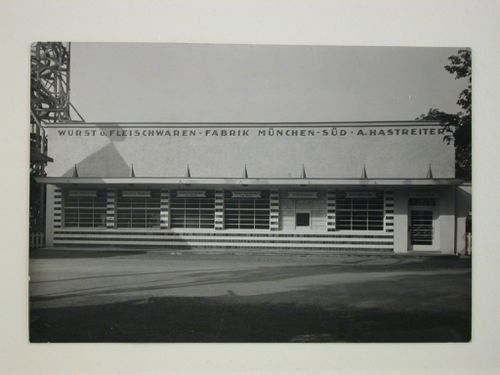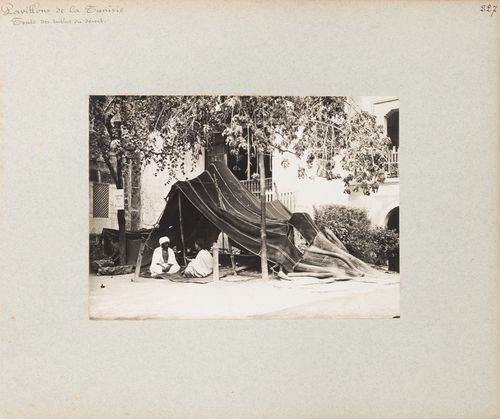Project
Human Wall (2012)
AP207.S1.2012.PR07
Description:
The project series documents "Human Wall", an installation by Pettena presented at the Galleria Federico Luger in Milan, in 2012. The installation consists of a large rectangular surface handmade with clay and covered in imprints of hands and fingers. "A wall that is described as "human," certainly not just because it is made by man, but rather because the latter's intervention find expression in the choice of a natural material and in the sign that he leaves on its surface with his fingers." [1] Other editions of this installation were also presented at the Utah Museum of Contemporary Art in Salt Lake City, in 2012, and the exhibition "Architetture Naturali/Gianni Pettena" at the Kunst Meran/Merano Arte in Meran, in 2017. The project series contains design studies for the texturing of the wall, photographs of the installation, a video of the montage of the installation in Milan in 2011. Source: [1] Gianni Pettena website, https://www.giannipettena.it/italiano/opere-1/inst-human-wall-2012-1/ (last accessed 27 January 2020)
2012-2018
Human Wall (2012)
Actions:
AP207.S1.2012.PR07
Description:
The project series documents "Human Wall", an installation by Pettena presented at the Galleria Federico Luger in Milan, in 2012. The installation consists of a large rectangular surface handmade with clay and covered in imprints of hands and fingers. "A wall that is described as "human," certainly not just because it is made by man, but rather because the latter's intervention find expression in the choice of a natural material and in the sign that he leaves on its surface with his fingers." [1] Other editions of this installation were also presented at the Utah Museum of Contemporary Art in Salt Lake City, in 2012, and the exhibition "Architetture Naturali/Gianni Pettena" at the Kunst Meran/Merano Arte in Meran, in 2017. The project series contains design studies for the texturing of the wall, photographs of the installation, a video of the montage of the installation in Milan in 2011. Source: [1] Gianni Pettena website, https://www.giannipettena.it/italiano/opere-1/inst-human-wall-2012-1/ (last accessed 27 January 2020)
Project
2012-2018
Max Wiederanders, München
PH1980:1015:237
Description:
Sign on building reads: 'Wurst u. Fleischaren-Fabrik München-Süd A. Hastreiter'.
architecture
1920s
Max Wiederanders, München
Actions:
PH1980:1015:237
Description:
Sign on building reads: 'Wurst u. Fleischaren-Fabrik München-Süd A. Hastreiter'.
architecture
PH1983:0042.06:035
Description:
A sign posted on a tree near the tent reads "Tente / Tapis / [des?] / Nomades"
1900
View of Bedouin tent with two men seated at entrance, Tunisian section, Exposition universelle, 1900, Paris, France
Actions:
PH1983:0042.06:035
Description:
A sign posted on a tree near the tent reads "Tente / Tapis / [des?] / Nomades"
Project
AP148.S1.1971.PR01
Description:
The project series comprises material related to a competition for an extension of a cemetery in Modena. Poli notes that this project was published in Casabella Magazine (no. 372 in 1972 and no. 380/81 in 1973). Some works are signed Alessandro Poli-Superstudio and these are noted at the file level. The main feature of the project material are the presentation panels on cardstock, which feature drawings and texts, including a quote by Louis Kahn. There is also a folder of material, which appear to be copies or variations on many of the drawings included on the presentation panels. Also included are the original competition poster and original competition documentation folder.
ca. 1971
Modena cemetery competition, Modena, Italy (1971)
Actions:
AP148.S1.1971.PR01
Description:
The project series comprises material related to a competition for an extension of a cemetery in Modena. Poli notes that this project was published in Casabella Magazine (no. 372 in 1972 and no. 380/81 in 1973). Some works are signed Alessandro Poli-Superstudio and these are noted at the file level. The main feature of the project material are the presentation panels on cardstock, which feature drawings and texts, including a quote by Louis Kahn. There is also a folder of material, which appear to be copies or variations on many of the drawings included on the presentation panels. Also included are the original competition poster and original competition documentation folder.
Project
ca. 1971
Project
AP066.S3.D11
Description:
Le dossier documente la soumission pour le concours sur invitation pour le Monument pour les fêtes du 350 ième anniversaire de Montréal tenu en 1993, de mars à juin. Le dossier contient des dessins, des maquettes et des documents textuels. Objectifs du concours: "La Ville de Montréal et la Corporation des célébrations du 350e anniversaire ont convenu de faire réaliser un monument destiné à rappeler aux générations futures les fêtes qui ont entouré le 350e anniversaire de la fondation de Montréal." Extrait du "Cahier des charges" (66-C011-002T). Description du projet par l'architecte: "Sur la paroi externe du Monument seront posés 18 panneaux d'émail de porcelaine dont un certain nombre communiqueront des archétypes de la fête en quelques sortes de signes compris par tous comme des éléments appelant des humeurs propres à l'état de fête." Jacques Rousseau, extrait de "À la recherche de l'esprit de la fête", texte manuscrit faisant partie du cahier de croquis (66-A011-001T).
1993
Monument pour les fêtes du 350ième anniversaire de Montréal
Actions:
AP066.S3.D11
Description:
Le dossier documente la soumission pour le concours sur invitation pour le Monument pour les fêtes du 350 ième anniversaire de Montréal tenu en 1993, de mars à juin. Le dossier contient des dessins, des maquettes et des documents textuels. Objectifs du concours: "La Ville de Montréal et la Corporation des célébrations du 350e anniversaire ont convenu de faire réaliser un monument destiné à rappeler aux générations futures les fêtes qui ont entouré le 350e anniversaire de la fondation de Montréal." Extrait du "Cahier des charges" (66-C011-002T). Description du projet par l'architecte: "Sur la paroi externe du Monument seront posés 18 panneaux d'émail de porcelaine dont un certain nombre communiqueront des archétypes de la fête en quelques sortes de signes compris par tous comme des éléments appelant des humeurs propres à l'état de fête." Jacques Rousseau, extrait de "À la recherche de l'esprit de la fête", texte manuscrit faisant partie du cahier de croquis (66-A011-001T).
Dossier 11
1993
drawings, textual records
AP018.S1.1969.PR01.044
Description:
This is a box of correspondence on possible benefactors, a museum location report, documentation on the opening of Stage I, project summaries and proposals, press kit materials, correspondence with Henry Moore, meeting minutes, design notes and calculations for Areas B and C, correspondence and reports on Phase 3, and drawings of graphics and signs for the gallery. It should be noted that these materials span the scope of multiple Art Gallery of Ontario projects completed by Parkin Architects Planners. They have been left together here to reflect their original order and context.
1968-1986
Project documentation, Henry Moore Sculpture Centre, Art Gallery of Ontario, Stage I Expansion, Toronto
Actions:
AP018.S1.1969.PR01.044
Description:
This is a box of correspondence on possible benefactors, a museum location report, documentation on the opening of Stage I, project summaries and proposals, press kit materials, correspondence with Henry Moore, meeting minutes, design notes and calculations for Areas B and C, correspondence and reports on Phase 3, and drawings of graphics and signs for the gallery. It should be noted that these materials span the scope of multiple Art Gallery of Ontario projects completed by Parkin Architects Planners. They have been left together here to reflect their original order and context.
drawings, textual records
1968-1986
Project
AP148.S1.1968.PR03
Description:
The project series consists of design work for an unidentified furniture design competition. Material in this project series was originally housed in a folder marked "Concorso Mobili anno 1968", and Poli mentions in his inventory that the project was in collaboration with Roberto Gherardi. The material in this series consists of drawings of a wide clock cabinet, each identified with the note "Motto autunno" (autumn theme). A similar theme is echoed in the caption of one of the photomontages: "Un mobile per tutte le stagioni" (furniture for all seasons). The photomontages feature this cabinet and other elements, such as a table, with photographic portraits of women and children. In his inventory, Poli notes that the photographs are of presentation panels, which were not received with the fonds. A number of items in this series are signed by Poli.
1968-1970
Furniture design competition (1968)
Actions:
AP148.S1.1968.PR03
Description:
The project series consists of design work for an unidentified furniture design competition. Material in this project series was originally housed in a folder marked "Concorso Mobili anno 1968", and Poli mentions in his inventory that the project was in collaboration with Roberto Gherardi. The material in this series consists of drawings of a wide clock cabinet, each identified with the note "Motto autunno" (autumn theme). A similar theme is echoed in the caption of one of the photomontages: "Un mobile per tutte le stagioni" (furniture for all seasons). The photomontages feature this cabinet and other elements, such as a table, with photographic portraits of women and children. In his inventory, Poli notes that the photographs are of presentation panels, which were not received with the fonds. A number of items in this series are signed by Poli.
Project
1968-1970
archives
Level of archival description:
Fonds
Stelco fonds
AP017
Synopsis:
The Stelco fonds, 1902-1982, documents the buildings of the Steel Company of Canada’s two Montréal sites, located on Notre-Dame street in Little Burgundy and in Saint-Henri. The fond is composed of drawings showing site plans and elevations.
1902-1982
Stelco fonds
Actions:
AP017
Synopsis:
The Stelco fonds, 1902-1982, documents the buildings of the Steel Company of Canada’s two Montréal sites, located on Notre-Dame street in Little Burgundy and in Saint-Henri. The fond is composed of drawings showing site plans and elevations.
archives
Level of archival description:
Fonds
1902-1982
drawings
Quantity:
8 File
ARCH259972
Description:
main floor and second floor plans, details (with attached correspondence), sign, second floor plan alternatives, shelving elevations and details
1972
Main floor and second floor plans, details (with attached correspondence)
Actions:
ARCH259972
Description:
main floor and second floor plans, details (with attached correspondence), sign, second floor plan alternatives, shelving elevations and details
drawings
Quantity:
8 File
1972
drawings
Quantity:
20 File
ARCH257809
Description:
site plan, floor plans, power distribution plan, reflected sun angles diagram, building grids, lobby furniture, furniture plans, sign details
1980-1983
Site plan, floor plans, power distribution plan, reflected sun angles diagram
Actions:
ARCH257809
Description:
site plan, floor plans, power distribution plan, reflected sun angles diagram, building grids, lobby furniture, furniture plans, sign details
drawings
Quantity:
20 File
1980-1983

